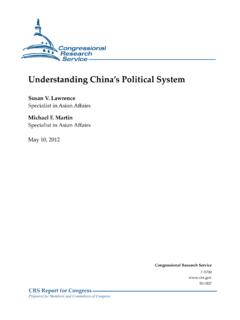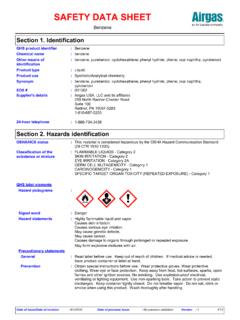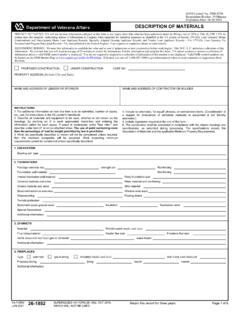Transcription of Chinese Inventions Article-2
1 Top 20 Ancient Chinese Inventions Ancient China held leading positions in many fields in studying nature in the world. Besides the four great Inventions papermaking, printing, gunpowder and the compass, Ancient China contributed countless other Inventions to the world, how many other creations do you know? Below is a list of the 20 Inventions created by ancient Chinese and some may surprise you. 1. Paper Making 105 The invention of paper greatly affects human history. Paper already existed in China since 105 , however, a eunuch named Cai Lun (ca.)
2 50 AD 121) made significant innovation and helped drive its widespread adoption. His advanced paper-making technology then spread to central Asia and the world through the Silk Road. For more information: 2. Movable Type Printing 960-1279 AD Woodblock printing was already a widely used technique in the Tang Dynasty. However, this kind of printing tech was expensive and time-consuming. Until the Song Dynasty (960-1279), a man named Bi Sheng (990 1051) invented movable type printing, making it quicker and easier. He first carved individual characters on pieces of clay and then harden them with fire.
3 These movable type pieces were later glued to an iron plate to print a page and then broken up and redistributed for another page. This kind of printing tech rapidly spread across Europe, leading up to the Renaissance, and later all around the world. For more information: 3. Gunpowder 1000 Gunpowder was invented by Chinese Taoist alchemists about 1000 when they tried to find a potion to gain human immortality by mixing elemental sulfur, charcoal, and saltpeter. It is generally believed that gunpowder spread to Europe during the Mongol expansion of 1200-1300 The interesting fact is that Chinese used this discovery mainly for firecrackers while Europeans created cannons and guns and dominated China in the mid-1800s.
4 For more information: 4. Compass 1100 A compass is a navigational instrument that shows directions. The compass was invented by Chinese between the 2nd century BC and 1st century AD. It was first used in Feng Shui, the layout of buildings. By 1000 AD, navigational compasses were commonly used on Chinese ships, enabling them to navigate. Arab traders sailing to China might learned of the tech and brought it to the West. For more information: 5. Alcohol 2000 BC 1600 BC The inhabitants of the Arabian Peninsula were widely believed to be the first brewers.
5 However, in 2013, a 9000-year-old pottery found in Henan province revealed the presence of alcohol, 1000 years before Arabian. Alcohol is known as Jiu in Chinese and is often used as a spiritual offerings to Heaven and the Earth or ancestors in ancient China. Study shows that beer with an alcoholic content of 4% to 5% was widely consumed in ancient China and was even mentioned on oracle bone inscriptions of the Shang Dynasty (1600 BC 1046 BC). 6. Mechanical Clock 725 The world s first mechanical clock -Water-driven Spherical Birds was invented by Yi Xing, a Buddhist monk in 725 It was operated by dripping water which powered a wheel that made one revolution in 24 hours.
6 Hundreds of years later, the inventor Su Song developed a more sophisticated clock called the Cosmic Empire in 1092, 200 years earlier before the mechanical clock was created in Europe. For more information: 7. Tea Production 2,737 BC According to old Chinese legend, tea was first discovered by Shennong, Chinese Father of Agriculture, around 2,737 BC. In the Tang Dynasty (618 907) tea became a popular drink enjoyed by all social classes. Cha Jing (or The Book of Tea), written by Lu Yu in the Tang Dynasty, explicated ways to cultivate tea, tea drinking and different classifications of tea in details.
7 The book is considered as the world s first monograph about tea. And the world s oldest and largest living tea tree can be found in Lin Cang, China, about 3,200 years old. For more information: (see section on China). 8. Silk 6,000 years ago Silk, one of the oldest fibers, originated in China as early as 6,000 years ago. The earliest evidence of silk was discovered at Yangshao culture site in Xiaxian County, Shanxi Province, China where a silk cocoon was found cut in half, dating back to between 4000 and 3000 BC. Chinese people mastered sophisticated silk weaving tech and closely guarded secret, and the West had to pay gold of the same weight for the silks.
8 In ancient times the silk was a very important item made in China and for many centuries businessmen transported this precious item from China to the West, forming the famous Silk Road. For more information: 9. Umbrella 1,700 years ago The Inventions of umbrella can be traced back as early as 3500 years ago in China. Legend has it, Lu Ban, a Chinese carpenter and inventor created the first umbrella. Inspired by children using lotus leaves as rain shelter, he created umbrella by making a flexible framework covered by a cloth. For more information: 10.
9 Acupuncture 2300 years ago The oldest Chinese medicine book Neijing , also known as The Classic of Internal Medicine of the Yellow Emperor , shows that acupuncture was widely used as a therapy in China much before the time it was written. Besides, various kinds of acupuncture needles were discovered in the tomb of Prince Liu Sheng who died around 200 This is a further proof that acupuncture were already in use in China more than two thousand years ago 11. Iron smelting 1050 BC 256 BC Archaeological evidence revealed that iron smelting technology was developed in China as early as 5th century BC in the Zhou Dynasty (1050 BC 256 BC).
10 During The Spring & Autumn and Warring States periods (776-221 BC) China went into a flourishing period for iron smelting. In the Han Dynasty (202 BC 220 AD) central government monopolized the iron smelting, seeing remarkable development. 12. Porcelain 581 618 AD Porcelain is a great invention of ancient China. The earliest porcelain emerged in Shang Dynasty (1600 1046 BCE) and matured during the Tang Dynasty (618-906). During the Song Dynasty (960 1279), porcelain production technology reached an unprecedented height due to its focus on shape and the tactile experiences of the glaze.









